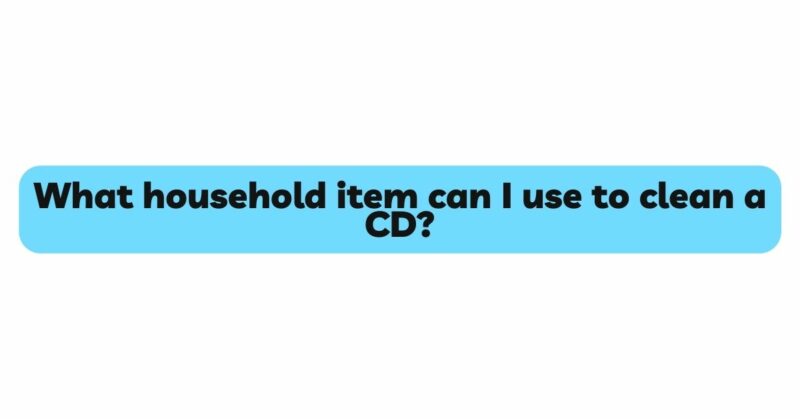In the modern age of digital media, Compact Discs (CDs) may seem like a relic from the past. However, they still hold a significant place in our lives, storing cherished memories, musical favorites, and valuable data. Over time, these discs can accumulate dust, fingerprints, and smudges that hinder their performance and diminish their audio quality. Rather than relegating these discs to oblivion, a simple cleaning routine using household items can rejuvenate them and extend their lifespan.
The Need for CD Cleaning: Why it Matters
A CD’s surface might appear pristine, but in reality, it’s a delicate structure vulnerable to contamination. Dust particles, oils from fingerprints, and environmental pollutants adhere to the surface, causing reading errors, audio skipping, and data corruption. Such issues can turn a joyful music-listening session or an important data retrieval task into a frustrating experience. To avoid these inconveniences and preserve the integrity of your CDs, regular cleaning becomes imperative.
Common Household Items for Effective CD Cleaning
- Microfiber Cloth: The cornerstone of CD cleaning is a microfiber cloth. This soft and gentle fabric is designed to attract and hold onto dust and dirt particles without scratching the CD’s surface. To clean a CD using a microfiber cloth, simply wipe the surface in a straight motion from the center towards the outer edge. This action not only removes dust but also tackles light smudges and fingerprints.
- Isopropyl Alcohol: For more stubborn stains or grime, isopropyl alcohol can be employed. Isopropyl alcohol is a common household item with excellent cleaning properties and rapid evaporation. Dilute the alcohol with water in a 1:1 ratio, dampen a microfiber cloth with the mixture, and gently wipe the CD’s surface. Be cautious not to apply excessive pressure, as vigorous rubbing could lead to micro-scratches.
- Distilled Water: Pure and free of contaminants, distilled water can be an effective and gentle cleaning agent. Dampen a microfiber cloth with distilled water and wipe the CD’s surface using the same center-to-edge motion. This method is especially useful for removing sticky residue left by labels or stickers.
- Mild Dish Soap: In situations where the CD is particularly dirty or sticky, a mild dish soap solution can be employed. Mix a drop or two of dish soap in a bowl of lukewarm water. Dampen a microfiber cloth with this solution, making sure it’s not overly wet, and gently wipe the CD’s surface. Follow up with a clean, damp cloth to remove any soap residue, and then dry the CD thoroughly.
- White Vinegar: Known for its acidic and cleaning properties, white vinegar can effectively remove stains and grime from CDs. Create a solution by mixing equal parts of white vinegar and water. Dampen a microfiber cloth with this solution and gently wipe the CD’s surface. Like with other methods, ensure the cloth is not dripping wet to avoid any liquid seeping into the CD player.
Best Practices for CD Cleaning
- Always clean CDs in a well-lit and dust-free environment.
- Avoid circular or aggressive motions that could lead to scratches.
- If using liquid, apply it to the cloth rather than directly on the CD.
- Allow the CD to air dry completely before playing or storing it.
- Store CDs in jewel cases or protective sleeves to prevent future contamination.
Conclusion
While streaming services and digital downloads dominate the music and data scene, CDs continue to have a place in our hearts and storage shelves. To ensure their longevity and optimal performance, a proper cleaning routine is essential. Utilizing household items such as microfiber cloths, isopropyl alcohol, distilled water, mild dish soap, and white vinegar can help restore clarity and sound to these discs. By adopting these methods and practices, you can continue to enjoy the audio and memories encapsulated within your CDs for years to come.

